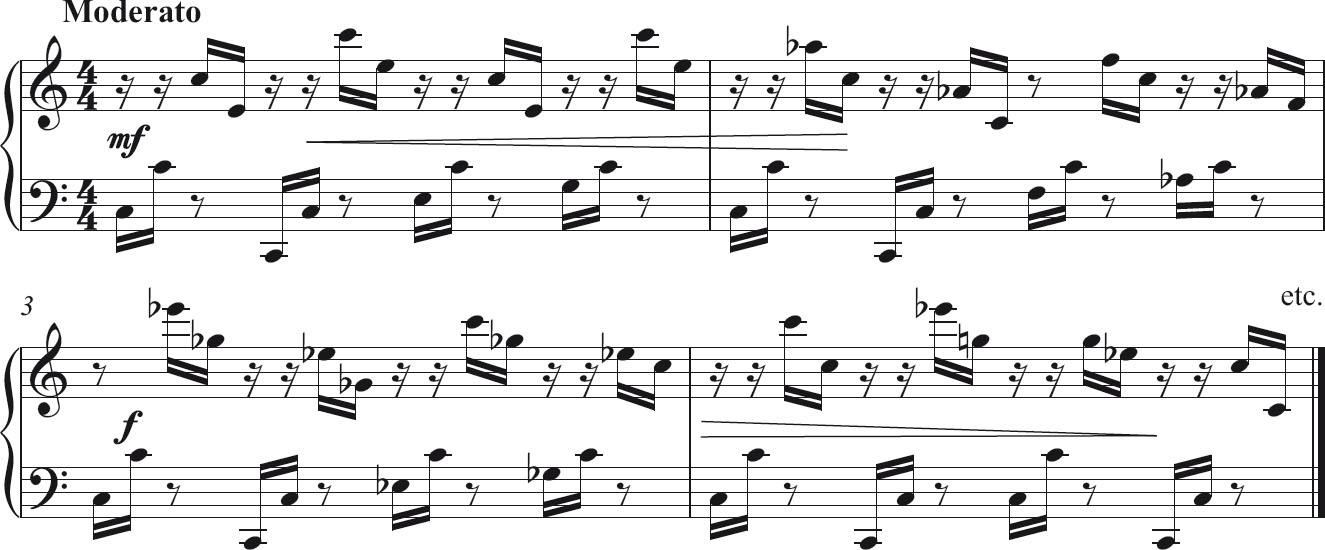
In last month's article, we selected a series of eight chords to form the basis of the structure of a new piece (Fig 1).
The challenge now is to find appropriate textures, rhythms and a melody within that framework. This might be approached in many different ways. My piece will be for the piano – here are a few ideas.
I'm going to use my chord sequence to provide a melody. To do this, I will select a time signature and an appropriate rhythmic pattern, and form the melody from the notes taken from each chord within each bar (Fig 2).
I now have my melody. It's very simplistic, and it's easy to see how the theme has been formed literally by picking out the harmonies from the chords. I am going to add an accompaniment, again, formed from the notes within each chord (Fig 3).
This is one possible accompaniment, but there are even simpler accompaniment solutions for those who prefer to use one chord per bar (in the bass). Low notes form effective accompaniments to such twisting melodies. In performance, one might add the sustaining pedal to allow the whole instrument to ‘ring’, so that each chord can resonate.
At the end of eight bars, we now need to find a way to expand the piece. Taking the same chord structure, let's repeat it, but with a slightly different texture. I will use the first four bars, developing the melodic material and expanding on the idea (Fig 4). Another idea would be to use the first four bars but this time with more movement and drama (Fig 5).
There are so many variations on such a theme – that's why this type of structure could effectively be viewed as a theme and variations. Try to put the melody in the bass clef, with treble accompaniment. This is a helpful exercise. Another useful suggestion is to use the melody as the basis for a contrapuntal eight bars; by this I mean to use several musical lines at the same time.
After 16 bars, we could change the pattern and select another totally different eight-bar chord sequence, or we could use our existing sequence but in a different order. Or you could even change some chords, adding further chromatic colour to the sequence. There are many possibilities, and this is where students can allow their imaginations to take flight.
Using this chord sequence, add a different texture and rhythmic pattern to this series of eight bars, which will add interest in the middle of the piece, after which it's a good idea to return to the original eight-bar phrase and melody to end this short piece.
Once all 32 bars have been written, with different textures and rhythmic patterns, the piece is complete. It might be quite varied, but it will still have the chord progressions and reference to the melody throughout, which will provide synergy. Your student will have now written a 32-bar piece using a fairly strict but simple format. This might form the basis for much further experimentation, especially as they become accustomed to working it out for themselves.

Fig 1

Fig 2

Fig 3

Fig 4 
Fig 5




